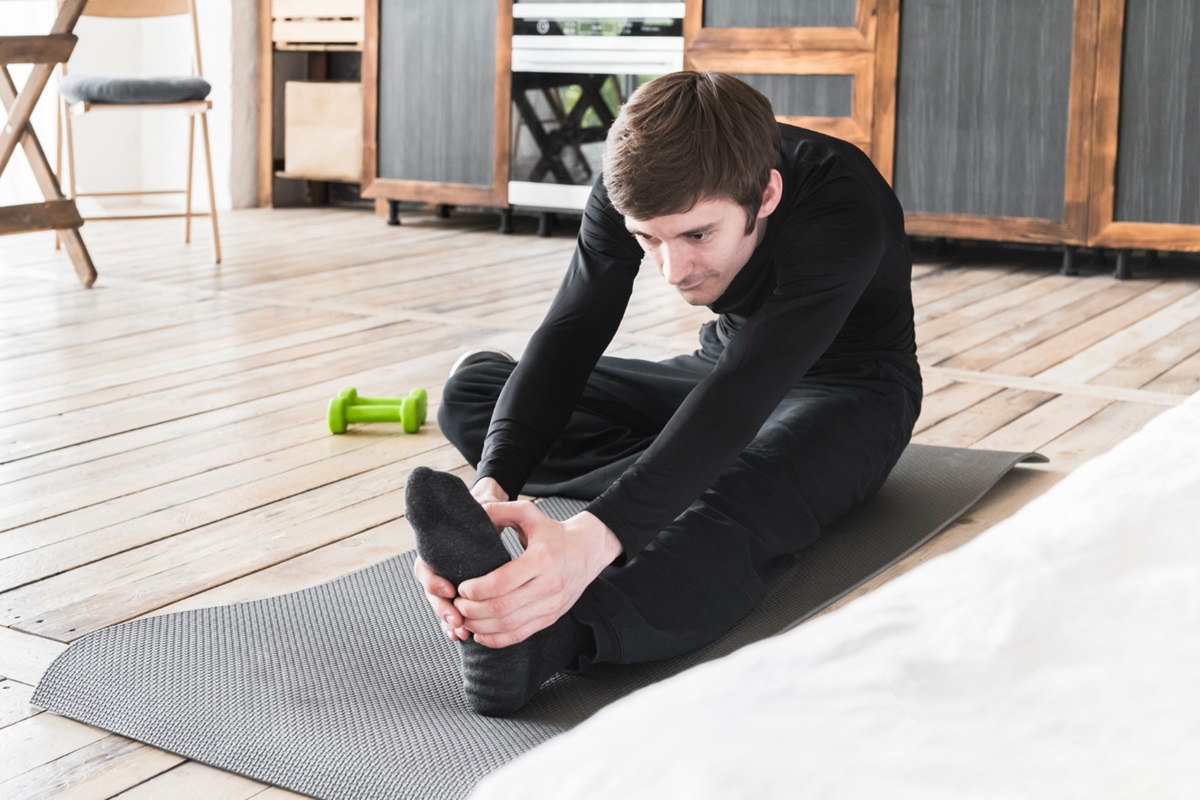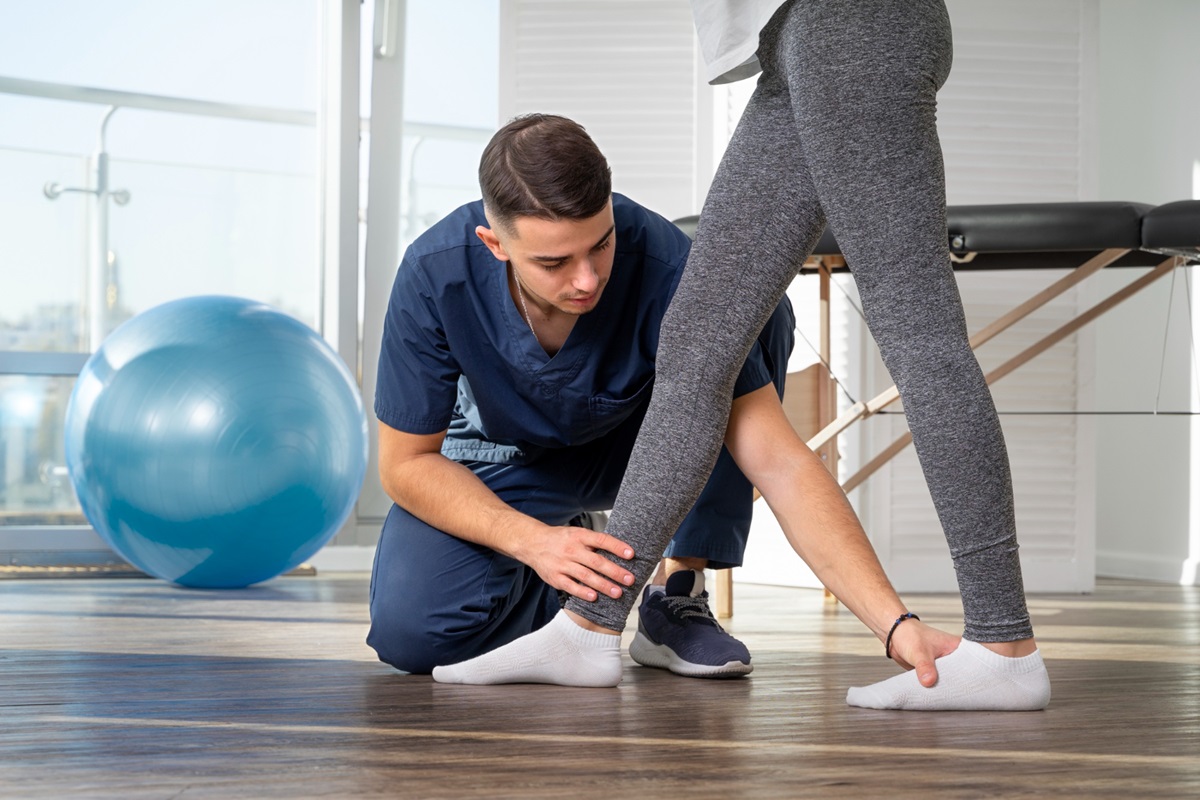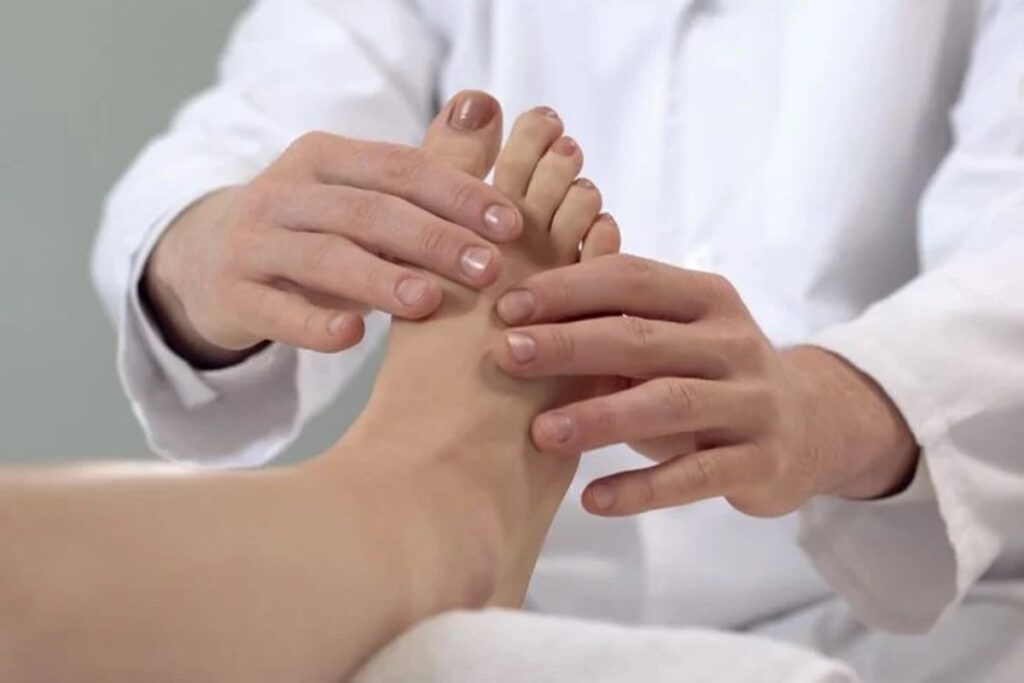Achilles tendonitis is a common overuse injury that affects the tendon connecting your calf muscles to your heel bone. It can cause pain, swelling, and stiffness—especially during physical activity. One of the most effective ways to treat and manage this condition is through targeted Achilles tendonitis exercises, which help reduce pain, improve flexibility, and strengthen …
Achilles tendonitis is a common overuse injury that affects the tendon connecting your calf muscles to your heel bone. It can cause pain, swelling, and stiffness—especially during physical activity. One of the most effective ways to treat and manage this condition is through targeted Achilles tendonitis exercises, which help reduce pain, improve flexibility, and strengthen the tendon to prevent future injury. A structured rehabilitation plan that includes both stretching and strengthening is essential in supporting long-term tendon health and restoring full mobility.
Understanding Achilles Tendonitis and Its Types
Achilles tendonitis occurs when the Achilles tendon becomes inflamed due to overuse or excessive strain. Common causes include sudden increases in activity level, tight calf muscles, improper footwear, or biomechanical issues such as poor ankle mobility. Symptoms often include heel pain, tightness, swelling, and stiffness, particularly in the morning or after prolonged periods of rest.
There are two primary types: insertional Achilles tendonitis, which affects the lower part of the tendon near the heel, and non-insertional Achilles tendonitis, which involves fibers in the middle of the tendon. Both types can significantly impact function and daily activities if left untreated. Understanding the type and severity of your condition is critical for developing a successful rehabilitation plan under proper Podiatric Clinical Care.
According to the Mayo Clinic, Achilles tendinopathy is a prevalent overuse injury, with estimates showing up to 24% of athletes may experience it during their lifetime. This high occurrence emphasizes the importance of early detection and proactive intervention. Engaging in proper Achilles tendonitis exercises and seeking timely Podiatric Clinical Care can significantly improve outcomes for active individuals.
Why Exercise is Key to Recovery
Incorporating specific Achilles tendonitis exercises is fundamental to a successful recovery journey. These targeted exercises not only alleviate discomfort but also improve flexibility, restore range of motion, and build strength in the surrounding calf muscles. Exercise also helps support better tendon alignment and resilience, especially when guided by a physical therapist.
Engaging in a proper rehabilitation process includes gradually increasing the challenge of exercises based on your tolerance and activity level. Whether you’re doing flat surface exercises, incline walking, or working on single leg balance, the right rehabilitation efforts can accelerate the healing process. Consistency and professional supervision are essential to avoid setbacks and promote lasting improvement.
Flexibility Stretches to Relieve Pain
Stretching is an essential part of Achilles tendonitis rehabilitation. By improving mobility and reducing tightness in the calf muscles, stretching allows the Achilles tendon to move more freely and heal more effectively. These stretches for Achilles tendonitis are safe, effective, and should be performed daily as part of your rehabilitation plan.
Passive Toe Stretch
Sit on the floor with your legs extended. Use a towel or resistance band to gently pull your toes toward you until you feel a stretch along the Achilles tendon and calf. This simple towel stretch increases flexibility and is ideal for early stages of rehabilitating Achilles tendonitis.
Standing Calf Stretch for Gastrocnemius
Stand facing a wall with one foot forward and one back. Keep the back knee straight and the heel pressed into the floor. This standing calf stretch targets the gastrocnemius and improves mobility and flexibility when held for 30 seconds and repeated 3 times per leg.
Standing Calf Stretch for Soleus
Use the same position as above, but bend your back knee slightly to focus the stretch on the soleus muscle. This soleus stretch targets the lower calf and relieves tension on the lower part of the Achilles tendon. Perform 3 sets of 30 seconds each.
Seated Calf Stretch with Knee Straight
Sit on the floor with your knee extended and wrap a towel or band around the ball of your foot. Pull your foot gently toward you, keeping the knee straight. This calf stretch (seated, knee straight) helps lengthen the muscle and tendon gently for those in early Achilles tendonitis rehabilitation.
Calf Stretch on a Step
Stand on a step or curb with your heels hanging off the edge. Let your heels drop below the level of the step to feel a deep calf stretch. This calf stretch on a step is one of the more effective Achilles tendonitis stretches for improving tendon mobility.
Strengthening Exercises to Build Tendon Resilience

Rebuilding tendon strength is essential for full recovery and injury prevention. Incorporating exercises for Achilles tendonitis that promote strength and control in the calf muscles is key to maintaining tendon health. These targeted exercises help ensure the tendon can withstand future loads and activities.
A comprehensive review published in Frontiers in Sports and Active Living highlights that eccentric exercise routines provide strong evidence for improving strength in individuals with mid-portion Achilles tendinopathy. Additionally, moderate evidence supports their benefit in enhancing power and balance. This reinforces the value of incorporating eccentric heel drops as a core component of Achilles tendonitis rehabilitation programs.
Eccentric Heel Raises for Gastrocnemius
Stand on a flat surface or step and raise both heels. Shift your weight to one leg and slowly lower that heel. These eccentric heel drops build tendon durability and should be done for 3 sets of 15 reps as part of an eccentric stretching programme.
Soleus Heel Raises
Bend your knees slightly and perform the same heel raise motion. This activates the soleus muscle, improving endurance and aiding insertional Achilles tendonitis rehabilitation. Add inclines gradually as strength improves.
Seated Calf Raises
Sit on a chair and place weight on your knees while raising your heels. These seated calf raises are excellent early-stage strengthening exercises and help restore muscle balance without placing too much load on the tendon.
Toe Walks and Single Leg Balance
Walk on your toes for 30 seconds to strengthen the Achilles tendon and improve posture. Add single leg balance drills with eyes open and eyes closed to improve proprioception and stability. These functional drills enhance overall mobility and prevent future injury.
Heel Drops and Reverse Lunges
Perform heel drops off a step to lengthen and strengthen the Achilles tendon. Combine with reverse lunges to engage the posterior chain and simulate functional movement patterns. These exercises are ideal for later stages of your rehabilitation plan.
Additional Therapies and Tips During Recovery
Supporting your Achilles tendonitis exercises with supplementary therapies boosts outcomes and prevents setbacks. These additional strategies complement physical activity and foster faster healing.
Does Massage Help Achilles Tendonitis?
Yes. Gentle massage improves circulation, reduces calf muscle tightness, and promotes healing. A physical therapist may include massage as part of your rehabilitation plan to support the Achilles tendon and surrounding tissues.
Pain Triggers to Avoid
Avoid uphill running, incline running, abrupt changes in activity level, or improper footwear. Ignoring pain during Achilles tendonitis stretches or exercises may hinder the healing process. Always follow professional guidance during your recovery journey.
Dos and Don’ts While Rehabilitating Achilles Tendonitis
Do: Stick to your rehabilitation plan, perform Achilles tendonitis exercises daily, and work with a physical therapist for proper progression.
Don’t: Push through sharp pain, skip rest days, or return to intense activity too soon. Skipping important stretches for Achilles tendonitis can prolong recovery and cause reinjury.
Consistency, patience, and smart activity modifications are key to long-term success.
How Long Will It Take for Exercises to Work?
Most people begin to feel relief after 2–4 weeks of consistent Achilles tendonitis exercises and stretching routines. Full recovery depends on the severity of the condition, your activity level, and how well you follow your rehabilitation plan. With proper Podiatric Clinical Care, many patients recover in 3–6 months.
How Wisconsin Foot & Ankle Clinic Can Help You Recover

At Wisconsin Foot & Ankle Clinic, we offer expert Podiatric Clinical Care and comprehensive Conservative Therapy Services tailored to your needs. Our team designs individualized Achilles tendonitis rehabilitation programs, including professional assessment, physical therapy sessions, and long-term support. We guide you through the entire rehabilitation process—from initial care to full functional recovery.
Whether you need help with Achilles tendonitis stretches, eccentric heel drops, or advanced mobility work, we’re here to help. Start your personalized recovery journey with our dedicated team.
Conclusion
Targeted Achilles tendonitis exercises and stretches for Achilles tendonitis are essential tools for reducing pain, regaining strength, and restoring full function. A consistent and carefully monitored approach helps patients overcome discomfort and return to normal activity with confidence. Trust Wisconsin Foot & Ankle Clinic for expert support through your Achilles tendonitis rehabilitation.
FAQs
What is the fastest way to heal Achilles tendonitis?
Following a structured rehabilitation plan with rest, stretching, and targeted Achilles tendonitis exercises under professional guidance yields the best results. Avoiding triggers and engaging in Conservative Therapy Services speeds up recovery.
What is the best exercise for Achilles pain?
Eccentric heel drops are widely regarded as the most effective Achilles tendonitis exercises. Pair them with Achilles tendonitis stretches like standing calf stretch and towel stretch for optimal results.
Does walking help Achilles tendonitis?
Light walking can support mobility and maintain circulation, but excessive walking or walking on inclines may aggravate the tendon. Always consult a provider and follow your rehabilitation plan closely.







